Crafting with Kids: Easy DIY Home Decor Projects
Welcome to the wonderful world of crafting with kids! This article explores fun and simple DIY projects that kids can help create, turning your home into a personalized space filled with creativity and cherished memories. Imagine your living room adorned with vibrant art pieces made by tiny hands, or a dining table that showcases centerpieces crafted with love. Not only do these projects beautify your home, but they also create lasting memories that you and your children will cherish for years to come. So, roll up your sleeves, gather your supplies, and let’s dive into the colorful journey of DIY home decor!
Engaging in crafts with children promotes creativity, enhances fine motor skills, and fosters bonding. When you sit down to create something together, you're not just working on a project; you're building a relationship. The act of crafting allows kids to express themselves, turning their wild ideas into tangible art. Moreover, as they cut, glue, and paint, they develop crucial skills that will benefit them in various aspects of life. It’s like giving them a toolbox for their future, filled with creativity and confidence!
Before starting any project, having the right supplies is crucial. Here’s a quick list of essential tools and materials that make crafting enjoyable and successful for kids:
- Paper: Various types like construction paper, cardstock, and recycled paper.
- Adhesives: Glue sticks, liquid glue, and tape.
- Scissors: Child-safe scissors for little hands.
- Paints and Brushes: Watercolors, acrylics, and brushes of different sizes.
- Natural Materials: Leaves, twigs, and stones for nature-inspired crafts.
Having these supplies on hand will make your crafting sessions smooth and enjoyable. Remember, the goal is to have fun and let your children's imaginations run wild!
Wall art is a fantastic way to personalize your home. Kids can create stunning pieces that reflect their personalities and interests. For instance, why not try a handprint tree? Simply have your child dip their hands in paint and press them onto a canvas to form the leaves, while the trunk can be painted with a brush. This not only adds a splash of color to your walls but also serves as a beautiful reminder of their growth. You could also explore collage art by cutting out pictures from magazines and arranging them in a creative way. These projects are not just about decor; they’re about capturing moments in time!
Centerpieces can transform any table setting, and kids can help design imaginative ones that add a personal touch to family meals. Think about creating a seasonal centerpiece using items like pinecones, leaves, or even fruits. For example, during autumn, gather colorful leaves and arrange them in a bowl with small pumpkins. Or, during spring, use mason jars filled with fresh flowers from the garden. The possibilities are endless! Not only do these centerpieces brighten up your dining area, but they also give children a sense of pride in their contributions.
Seasonal decorations bring joy and festivity to the home. Children love to celebrate, so why not let them create their own decorations? For Halloween, they can make paper ghosts by simply cutting out ghost shapes from white paper and hanging them around the house. During Christmas, they can craft ornaments from salt dough or even decorate pinecones to hang on the tree. Engaging in these seasonal crafts not only teaches kids about traditions but also allows them to express their creativity throughout the year!
Upcycling is not only eco-friendly but also sparks creativity. Encourage your kids to look around the house for items that can be transformed into charming decor pieces. For example, old glass jars can become beautiful candle holders with a little paint and some twine. An empty cereal box can be turned into a colorful photo frame with some craft paper and stickers. This not only helps reduce waste but also teaches children the importance of sustainability while allowing them to unleash their imagination!
Nature provides endless inspiration for crafts. Take your kids outside and explore the wonders of the natural world. Collect leaves, flowers, and stones to use in various projects. For instance, you can create a nature collage by gluing these items onto a canvas or paper. Another fun idea is to paint rocks and use them as garden decorations. This not only encourages kids to appreciate nature but also gives them a chance to create something beautiful using the materials around them.
Crafting with children can be messy yet rewarding. Here are some helpful tips to ensure a fun and organized crafting experience:
- Set up a designated crafting area to contain the mess.
- Use washable materials whenever possible.
- Encourage creativity but provide guidance when needed.
- Be patient and enjoy the process, even if things don’t go as planned!
By following these tips, you can create a joyful atmosphere that allows kids to express themselves freely while keeping the chaos to a minimum.
Q: What age is appropriate for crafting with kids?
A: Children as young as 2-3 years can start with simple projects, while older kids can handle more complex tasks. Always consider their skill level and interests.
Q: How can I encourage my child’s creativity?
A: Provide them with a variety of materials and let them experiment without strict guidelines. Celebrate their creations, no matter how imperfect!
Q: What should I do if my child loses interest in a project?
A: It’s normal for kids to lose focus. Be flexible and allow them to switch to a different project or take a break. The key is to keep it fun!
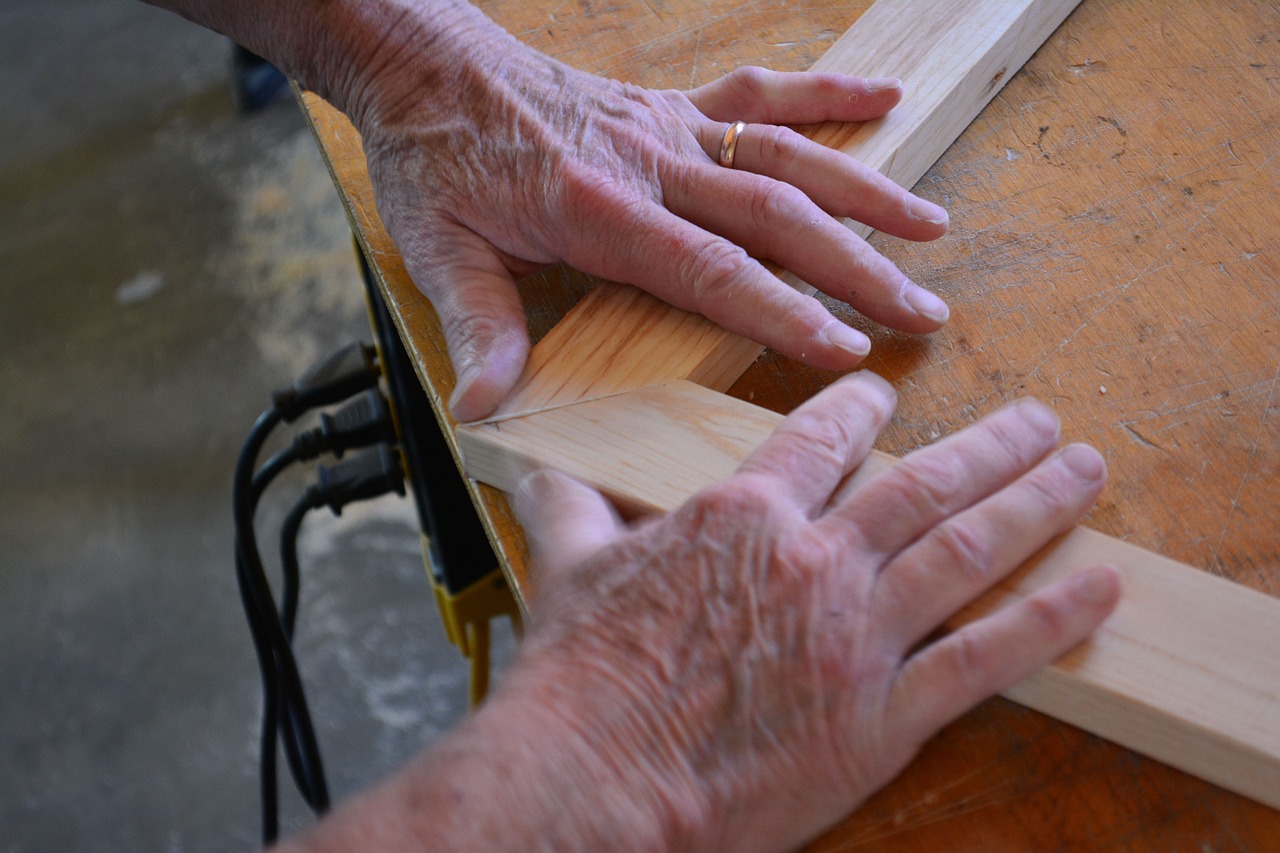
Benefits of Crafting with Kids
Engaging in crafts with children is more than just a fun way to spend an afternoon; it’s a powerful tool for their development. When kids get involved in creative projects, they unleash their imagination and explore their artistic side. This process not only promotes creativity but also enhances their fine motor skills. Think about it: when a child is cutting, gluing, or painting, they’re practicing hand-eye coordination and dexterity. These skills are foundational for many everyday tasks, from writing to tying shoelaces.
Moreover, crafting together fosters a unique bond between parents and children. Imagine sitting at the kitchen table, surrounded by colorful supplies, laughing and sharing stories as you create something beautiful. This shared experience strengthens relationships and builds lasting memories. It’s like weaving a tapestry of connection, where each thread represents a moment of joy and creativity.
Additionally, crafting provides children with a sense of accomplishment. When they complete a project, whether it's a painted flower pot or a handmade greeting card, they experience a boost in self-esteem. This feeling of achievement encourages them to take on new challenges, both in arts and in life. It’s a reminder that they can create something from nothing, which is a powerful lesson.
Crafting also serves as an excellent platform for teaching important concepts. For instance, while making a DIY bird feeder, you can discuss the importance of nature and caring for wildlife. Through these hands-on activities, kids learn about colors, shapes, and even basic math skills, like counting and measuring. It’s education wrapped in fun!
Lastly, let’s not forget the therapeutic benefits of crafting. In today’s fast-paced world, children often face stress just like adults. Engaging in creative activities can be a wonderful way to relax and unwind. It’s like giving their minds a mini-vacation, allowing them to express their feelings and thoughts through art. So, whether they're molding clay or painting a canvas, they’re not just having fun; they’re also finding a healthy outlet for their emotions.
In summary, the benefits of crafting with kids are vast and varied. From enhancing fine motor skills and fostering creativity to building self-esteem and strengthening bonds, these activities are invaluable. So the next time you’re looking for a way to connect with your child, consider diving into a craft project together. You’ll both be glad you did!
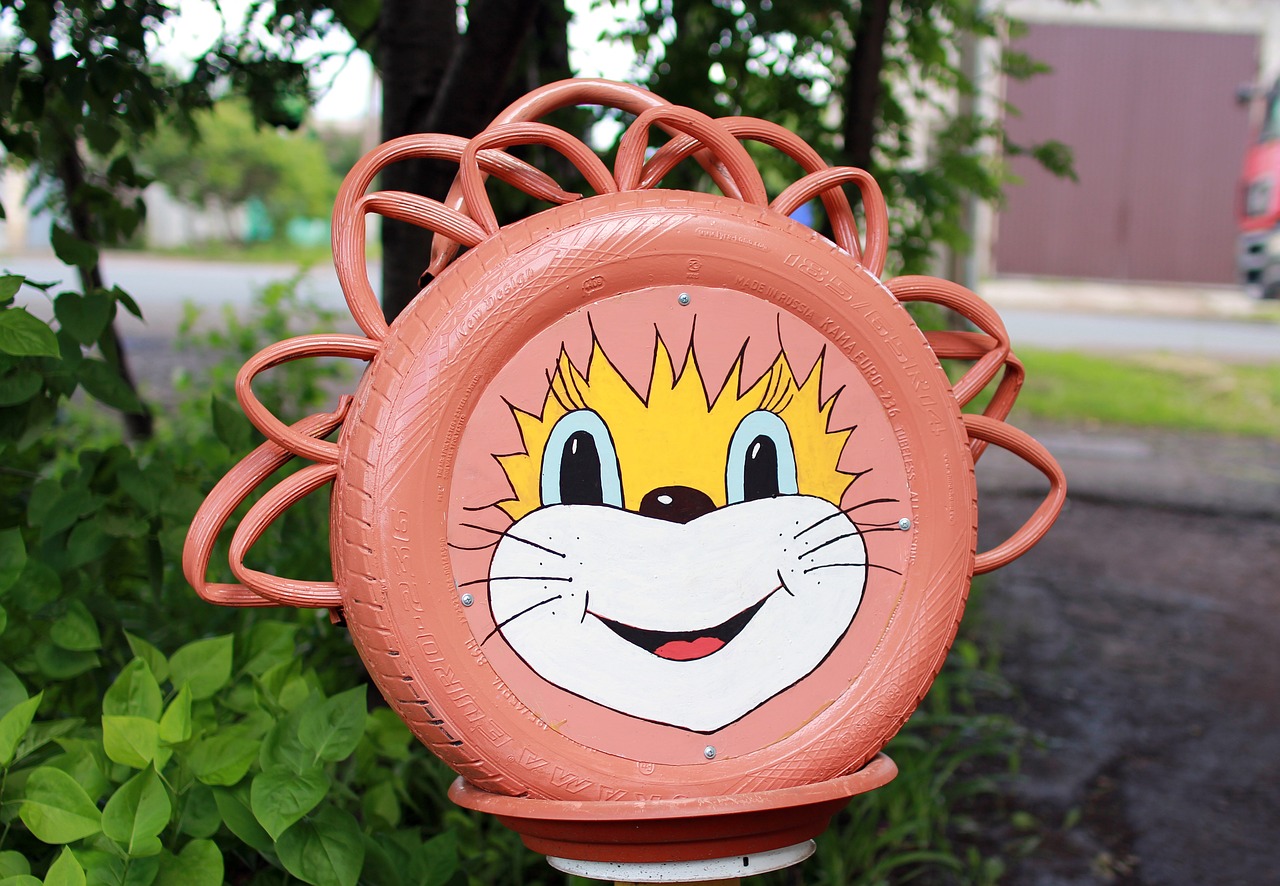
Essential Supplies for DIY Projects
When diving into the world of DIY projects with kids, having the right supplies is like having the perfect recipe for a delicious cake. You wouldn't want to bake without flour, right? Similarly, having essential crafting materials on hand can make all the difference between a fun, creative experience and a chaotic mess. So, what do you really need to get started? Let’s break it down!
First and foremost, consider the basics. A good set of art supplies is essential. This includes things like colored paper, markers, scissors, glue, and paint. Think of these as your crafting pantry. Just like you’d stock up on staples for cooking, having a variety of colors and textures can inspire creativity. You can set up a small crafting station at home where these supplies are easily accessible. This not only encourages spontaneous crafting sessions but also makes it easier to clean up afterward!
Next up, let’s talk about tools. While kids might not need the full toolbox, having a few kid-friendly tools can elevate your crafting game. Here are some must-haves:
- Safety scissors: Perfect for little hands and safe for cutting paper.
- Washable markers: Because we all know kids can be a bit messy!
- Non-toxic glue sticks: Easy to use and less messy than liquid glue.
- Paintbrushes: A variety of sizes for different painting techniques.
Now, let’s not forget about the creative extras that can really make your projects pop! Think about adding some embellishments to your supplies list. Items like stickers, glitter, ribbons, and buttons can turn a simple craft into a masterpiece. They allow kids to express their individuality and creativity, making each project uniquely theirs. It's like adding sprinkles to ice cream; it just makes everything a little more fun!
Another important aspect is to have a designated crafting space. It doesn’t have to be fancy—just a table covered with newspaper or an old tablecloth can work wonders. This way, kids can unleash their creativity without worrying about making a mess everywhere. Plus, having a specific spot for crafting can help them learn to clean up after themselves, which is a valuable lesson in responsibility.
Lastly, don’t underestimate the power of recyclable materials. Items like cardboard boxes, plastic bottles, and old magazines can be transformed into amazing art projects. Encourage kids to look around the house for things that might otherwise end up in the trash. It’s a fantastic way to teach them about sustainability while fostering their creativity. After all, one person’s trash is another person’s treasure!
In summary, gathering the right supplies for DIY projects with kids is all about creating an environment that encourages creativity and fun. By stocking up on the basics, having the right tools, and incorporating creative extras, you can ensure that every crafting session is a memorable experience filled with laughter and learning. So, are you ready to unleash your inner artist and start crafting with your little ones?
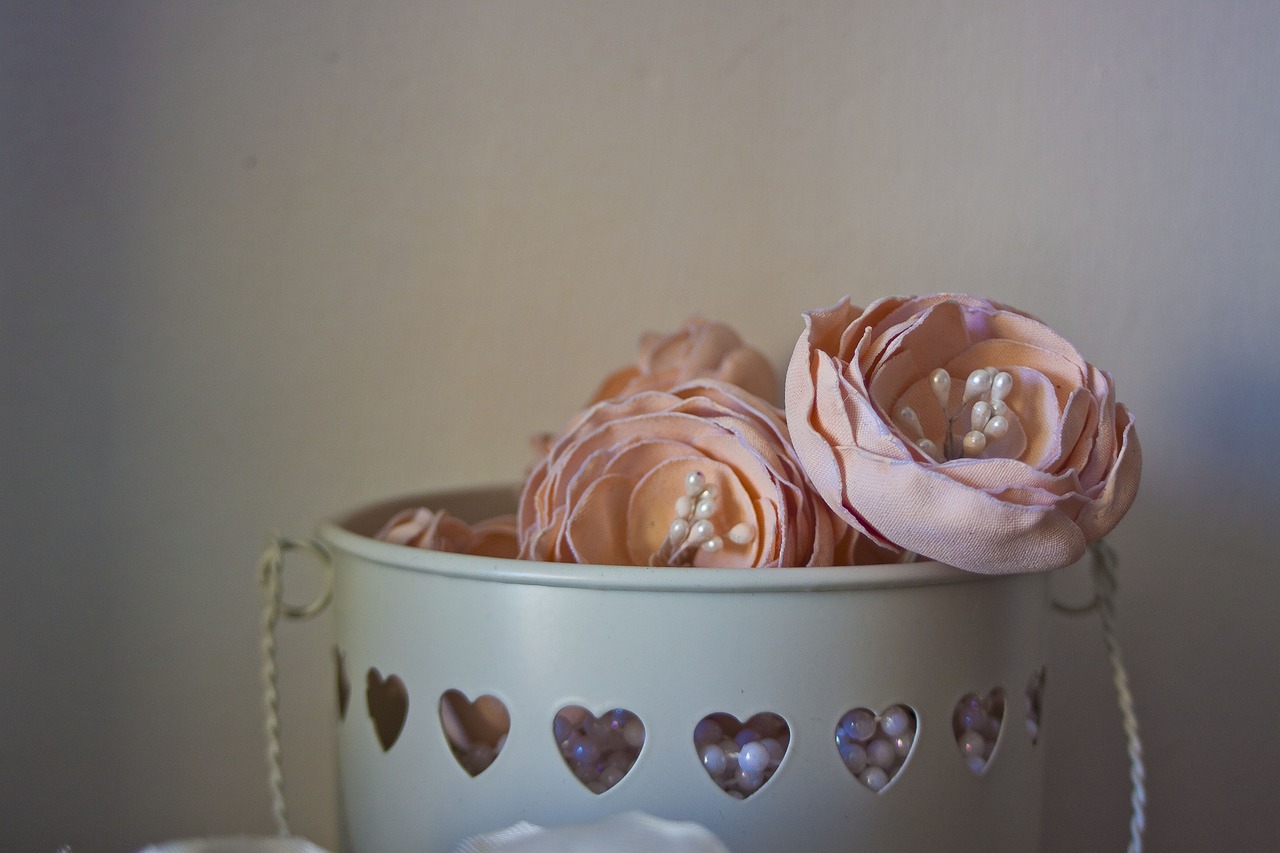
Simple Wall Art Ideas
When it comes to personalizing your home, wall art is one of the most effective ways to infuse character and charm into your space. And what better way to achieve this than by involving your kids in the creative process? Not only does this provide a fantastic opportunity for them to express their creativity, but it also allows for some quality bonding time. Imagine transforming plain walls into vibrant canvases filled with love and laughter, all thanks to your little ones!
One of the simplest projects to start with is creating a family handprint mural. All you need is a large canvas or a piece of butcher paper, some non-toxic paint, and your kids' hands! Each family member can choose a color and leave their handprint on the canvas. Once it dries, you can frame it or simply hang it up as is. This not only makes for a beautiful piece of art but also serves as a wonderful keepsake that captures a moment in time.
Another delightful idea is to make collage art. Gather old magazines, newspapers, or even fabric scraps, and let your kids cut out their favorite images and words. They can then glue these pieces onto a canvas or poster board to create a unique collage that reflects their interests and personality. This project encourages them to think outside the box and allows for endless possibilities. Plus, it’s a great way to recycle materials that would otherwise be thrown away!
For a more structured project, consider creating a themed wall gallery. Choose a theme that resonates with your family, like nature, travel, or favorite colors. Kids can draw or paint pictures that fit the theme, and you can frame them together. This not only beautifies your walls but also gives your children a sense of pride as they see their artwork displayed prominently in your home.
If you're feeling adventurous, why not try making textured wall art? Using materials like yarn, fabric, or even pasta, kids can create 3D art pieces. For instance, they can glue yarn in various patterns on a canvas to create a visually striking piece. The tactile nature of this project is sure to engage their senses and spark their imagination!
Lastly, don't underestimate the power of seasonal wall art. Encourage your kids to create different decorations for various holidays or seasons. For example, they can make paper snowflakes for winter, colorful leaves for autumn, or flowers for spring. This not only keeps your decor fresh and exciting but also gives children something to look forward to throughout the year.
In conclusion, wall art is a wonderful way to transform your home into a reflection of your family's creativity. By engaging your kids in these simple DIY projects, you not only create beautiful decor but also memories that will last a lifetime. So, grab those paints, papers, and canvases, and let the artistic journey begin!
- What age is appropriate for kids to start crafting? Kids as young as 3 can start with simple crafts, while older children can handle more complex projects.
- How can I keep crafting organized? Set up a designated crafting area and use storage bins to keep supplies organized and easily accessible.
- What are some safe materials for kids to use? Always opt for non-toxic, washable paints and glues. Look for materials specifically labeled as safe for children.
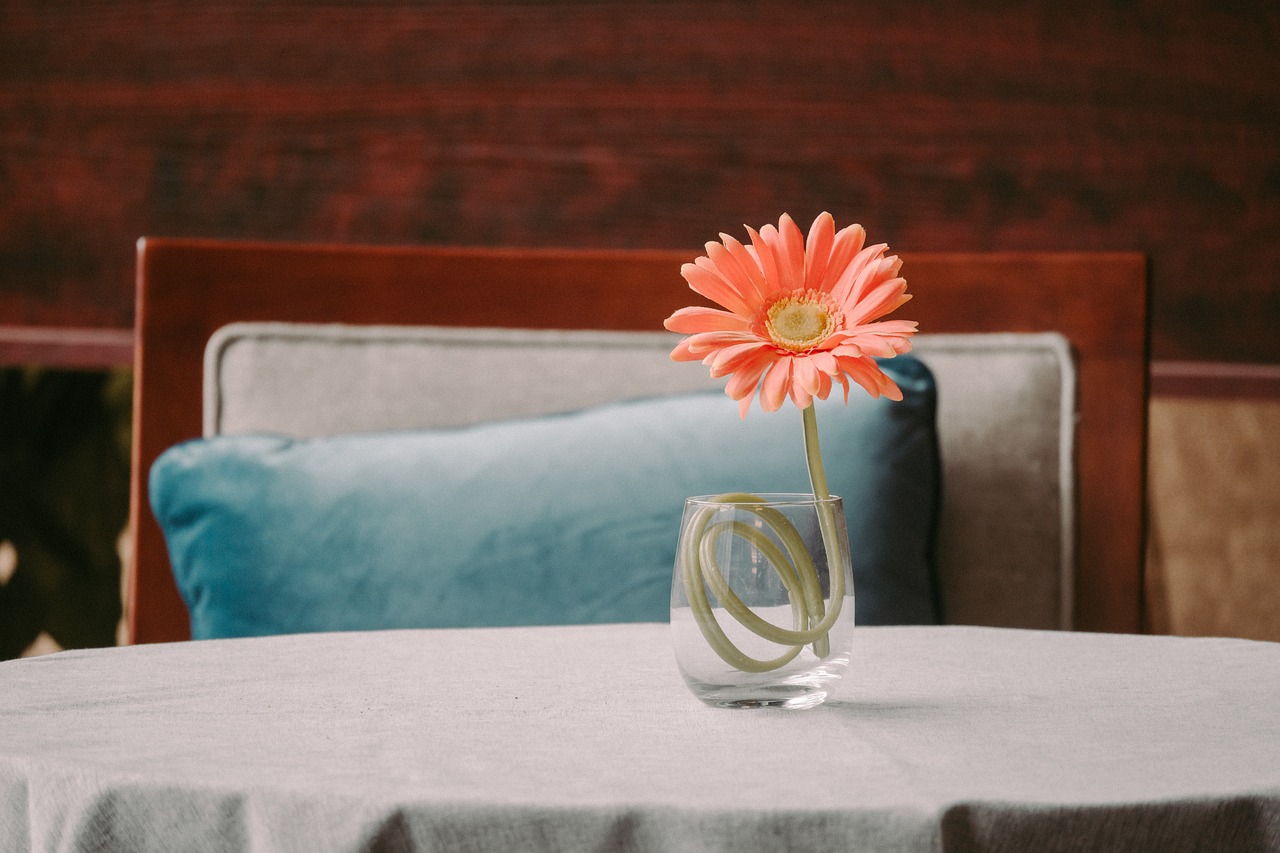
Creating Unique Centerpieces
When it comes to sprucing up your dining table or any surface in your home, centerpieces play a pivotal role. They not only catch the eye but also set the mood for gatherings, family meals, or casual hangouts. Imagine walking into a room and being greeted by a vibrant, handmade centerpiece that instantly lifts your spirits. Crafting unique centerpieces with your kids can be an incredibly rewarding experience, turning ordinary moments into extraordinary memories.
One of the best things about creating centerpieces is the endless possibilities. You can use materials you already have at home, and your kids can unleash their creativity in the process. For instance, consider using items like mason jars, pebbles, or even old toys. These can be transformed into stunning displays that reflect your family’s personality. Let’s dive into some fun ideas that will not only beautify your space but also engage your little ones in the creative process.
First up, why not try a nature-inspired centerpiece? Gather some twigs, leaves, and flowers from your backyard or a nearby park. Kids will love exploring the outdoors to collect these treasures. Once you have your materials, use a large glass vase to arrange the twigs as the base. Add some colorful flowers and leaves for a pop of color. This project is not only simple but also teaches kids about the beauty of nature and the importance of sustainability.
If you’re looking for something a bit more whimsical, how about creating a themed centerpiece based on your child's favorite story or movie? For example, if your child loves “The Lion King,” you could use a large bowl filled with sand, small toy animals, and some faux greenery to create a mini savannah scene. This project encourages imaginative play and storytelling, making mealtime more enjoyable as you discuss the adventures of their favorite characters.
Another fantastic idea is to create a seasonal centerpiece. Kids can help you gather seasonal items like pinecones and acorns in the fall or colorful eggs in the spring. Using a simple tray or bowl, arrange these items to reflect the current season. Not only does this keep your decor fresh and exciting, but it also teaches children to appreciate the changing seasons.
For a more interactive centerpiece, consider making a family memory jar. This project involves decorating a jar with paint or stickers and filling it with little notes or drawings that represent special family moments. Kids can write down their favorite memories or draw pictures to add to the jar. It’s a lovely way to spark conversations during meals and reflect on cherished times together.
Lastly, don’t forget about the power of color. Encourage your kids to paint or color small wooden blocks or stones in various shades. Stack them in a fun arrangement to create a vibrant centerpiece that adds a splash of color to your table. This project is not only fun but also helps kids develop their color recognition and fine motor skills.
In summary, creating unique centerpieces with kids is an enjoyable and enriching experience. Whether you’re crafting with natural materials, themed decor, or seasonal items, the key is to let your children's creativity shine. The best part? Each centerpiece tells a story, making your home feel warm and inviting. So, gather your supplies, unleash your imagination, and watch as your dining table transforms into a canvas of creativity!
Q: What materials do I need for crafting centerpieces with kids?
A: You can use a variety of materials such as mason jars, pebbles, flowers, twigs, seasonal items, and even recycled materials like old toys or cardboard.
Q: How can I ensure my kids stay engaged during the crafting process?
A: Keep the projects simple and allow them to express their creativity. Let them choose colors and materials, and encourage them to share their ideas.
Q: Are there any safety tips I should consider while crafting with kids?
A: Yes! Always supervise your children when using sharp tools or hot glue guns. Also, choose non-toxic materials whenever possible.
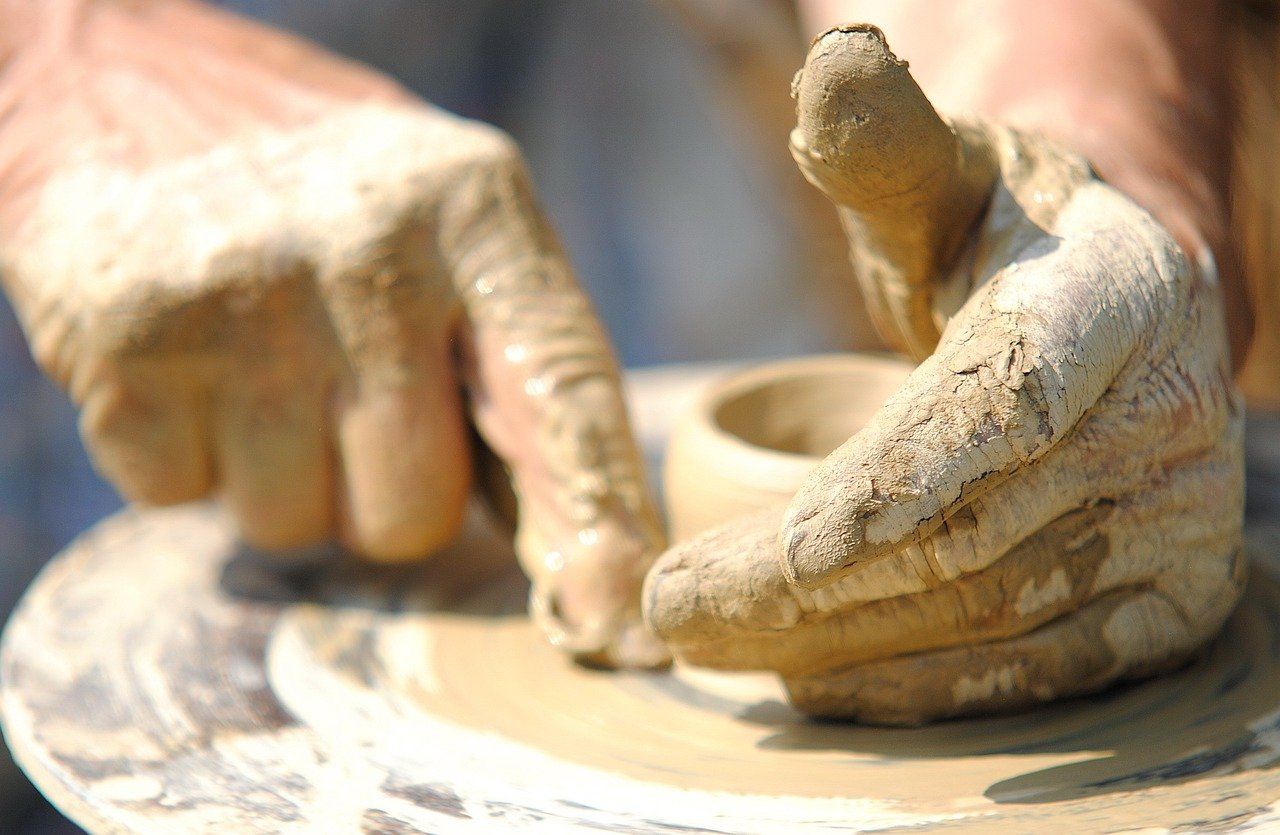
Fun Seasonal Decor Projects
Seasonal decorations are like a breath of fresh air for your home, bringing a sense of joy and festivity that can brighten up any space. Imagine walking into your living room and being greeted by vibrant colors and cheerful designs that reflect the current season. Crafting with kids to create these seasonal decor pieces not only fills your home with warmth but also creates lasting memories. So, let’s dive into some fun and easy projects that you can tackle together, turning your home into a canvas of creativity!
One of the most delightful projects to embark on is making seasonal wreaths. Whether it’s a spring floral wreath, a summer beach-themed one, an autumn leaf creation, or a winter wonderland masterpiece, this project allows kids to express their creativity. Start with a simple base, like a foam ring or a sturdy cardboard circle, and let your little ones embellish it with materials such as faux flowers, leaves, seashells, or even ornaments. This not only teaches them about different seasons but also encourages them to think outside the box.
Another exciting project is crafting themed table centerpieces. For example, during Halloween, you can create spooky centerpieces using mini pumpkins, black feathers, and LED candles. Kids can paint the pumpkins and arrange them in a way that tells a story. In winter, consider using pinecones, glitter, and some faux snow to create a cozy centerpiece that captures the essence of the holidays. Imagine sitting down for dinner, surrounded by creations made with love by your children—it’s a simple yet profound way to celebrate the season.
Don’t overlook the magic of seasonal garlands. These can be made from paper, fabric, or even natural elements like leaves and flowers. For a spring garland, gather colorful paper flowers, or for fall, string together cut-out leaves. Kids love cutting and gluing, and you can hang these garlands around doorways or along walls to instantly transform your space. Plus, they can be a great conversation starter when guests come over!
Let’s not forget about holiday ornaments. Crafting ornaments is a cherished tradition in many families, and it’s a wonderful way to bring the holiday spirit into your home. Using materials like salt dough, paper, or even recycled items, kids can create unique ornaments that reflect their personalities. You can even turn this into a family tradition where each year, you create a new ornament that represents that particular year. Imagine the joy of decorating the tree with ornaments that tell a story!
To wrap it all up, seasonal decor projects are not just about beautifying your home; they are about creating bonds, sharing laughter, and nurturing creativity. Each project is an opportunity to teach kids about the seasons, traditions, and the joy of crafting. So, gather your supplies, roll up your sleeves, and let the fun begin! Your home will not only look festive but will also echo with the laughter and creativity of your family.
Q: What are some easy materials to use for seasonal crafts?
A: Common materials include paper, glue, scissors, fabric scraps, natural elements like leaves and flowers, and even recycled items like plastic bottles or cardboard. The key is to use what you have at home to spark creativity!
Q: How can I make crafting with kids less messy?
A: Set up a designated crafting area with a protective covering like a tablecloth or newspaper. Use washable materials and have wet wipes or a damp cloth handy for quick clean-ups. Encourage kids to keep their supplies organized to minimize mess.
Q: Are there any safety tips for crafting with young children?
A: Always supervise young children, especially when using scissors or other sharp tools. Opt for child-safe scissors and non-toxic materials. It’s also a good idea to explain the crafting process to them to ensure they understand how to use the tools safely.
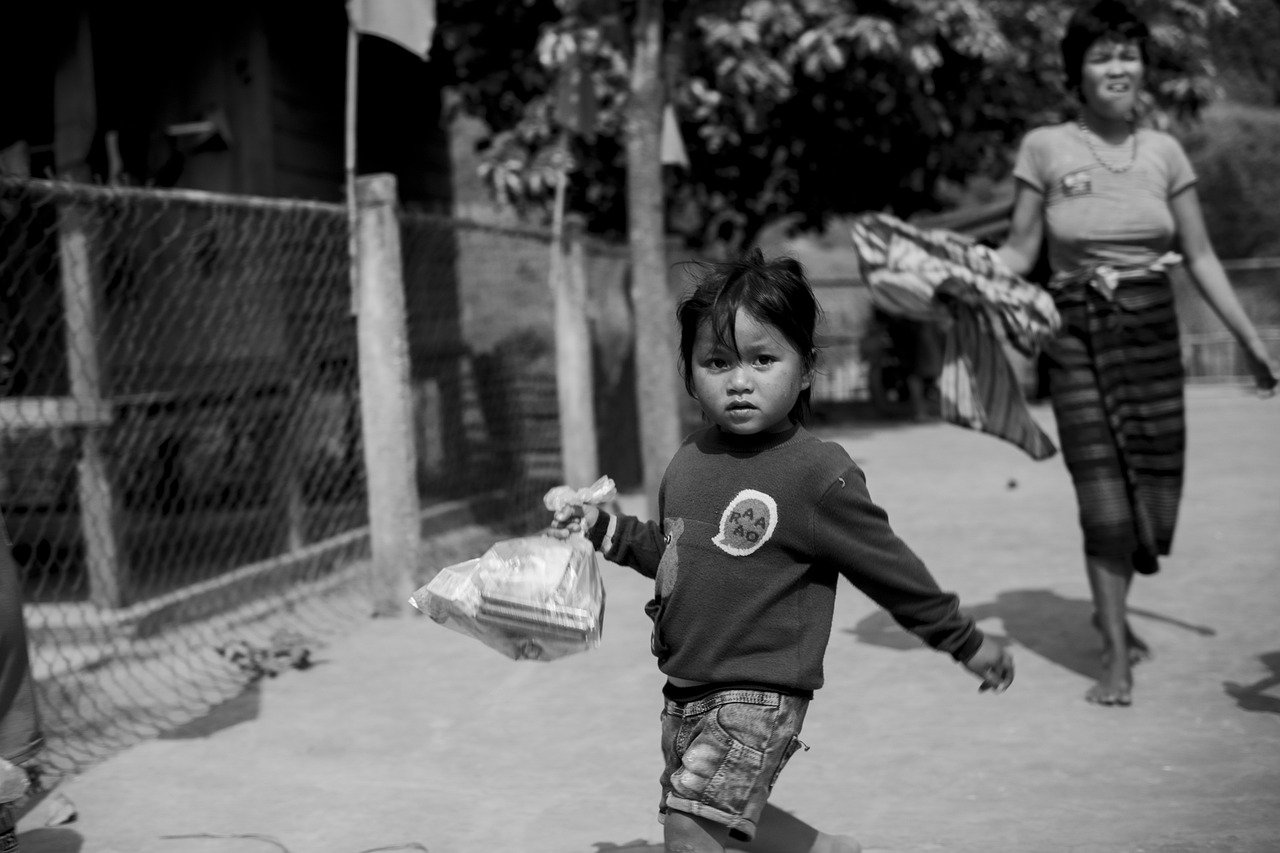
Upcycling Household Items
Have you ever looked around your home and thought, "What can I do with all this stuff?" Well, you're not alone! Upcycling household items isn't just a fun way to get creative with your kids; it's also a fantastic opportunity to teach them about sustainability and resourcefulness. Imagine turning that old shoebox into a vibrant storage solution or transforming empty jars into charming candle holders. The possibilities are endless, and the best part? You get to bond with your little ones while doing it!
Upcycling is like giving a second life to items that might otherwise end up in the trash. It’s a bit like magic—taking something ordinary and making it extraordinary. For instance, an old t-shirt can become a trendy tote bag with just a few snips and knots. This not only reduces waste but also sparks creativity in children, allowing them to express themselves through their creations. Plus, it’s a wonderful way to encourage them to think outside the box!
Here are a few ideas for upcycling projects that you and your kids can dive into:
- Glass Jars: These can be transformed into beautiful vases or storage containers. Let your kids paint them or wrap them in twine for a rustic look.
- Old Furniture: A simple coat of paint can breathe new life into a tired piece of furniture. Kids can help with the sanding and painting, making it a fun family project.
- Cardboard Boxes: Instead of tossing them out, turn them into playhouses or storage bins. Kids love decorating their own spaces!
Not only do these projects promote creativity, but they also help children develop problem-solving skills. When faced with a challenge—like figuring out how to attach a shoebox lid to the base—they learn to think critically and come up with solutions. This process can be incredibly rewarding, instilling a sense of accomplishment when they see their finished product.
Moreover, upcycling offers a fantastic opportunity to discuss environmental issues with your children. As you work together, you can explain the importance of reducing waste and how their actions can make a difference. It’s a win-win situation: you create something beautiful while instilling valuable lessons about caring for our planet.
So, grab those old items that are just collecting dust and turn them into something fabulous! Not only will you create unique decor for your home, but you'll also foster a love for crafting and creativity in your kids. Remember, the sky's the limit when it comes to upcycling—so let your imagination run wild!
Q: What are some easy upcycling projects for kids?
A: Some easy projects include turning glass jars into vases, using cardboard boxes for playhouses, or transforming old clothing into tote bags.
Q: How can I encourage my kids to be creative while upcycling?
A: Provide them with a variety of materials and let them brainstorm ideas. Encourage them to personalize their projects and think outside the box!
Q: Is upcycling safe for children?
A: Yes, as long as you supervise them and provide age-appropriate tools. Always prioritize safety and use non-toxic materials.

Crafting with Nature
When it comes to crafting with kids, nothing beats the beauty and inspiration that nature provides. Imagine stepping outside, feeling the fresh air, and letting your little ones explore the great outdoors. Nature is like a treasure chest filled with materials just waiting to be transformed into creative masterpieces. From twigs to leaves, rocks to flowers, the possibilities are endless! Not only does crafting with natural elements encourage creativity, but it also fosters a deeper appreciation for the environment.
One of the most exciting aspects of crafting with nature is the opportunity for exploration. Kids can collect various items during a nature walk, and each piece can spark their imagination. For instance, a simple walk in the park can yield:
- Colorful leaves in various shapes and sizes
- Beautiful flowers that can be pressed or used in arrangements
- Sticks and twigs perfect for building structures
- Rocks that can be painted or used in sculptures
Once you have gathered your natural materials, the real fun begins! Here are a few engaging project ideas that can turn those nature finds into stunning home decor:
- Leaf Prints: Dip leaves in non-toxic paint and press them onto paper or canvas to create beautiful prints. This project not only introduces kids to the concept of printmaking but also allows them to appreciate the intricate designs of leaves.
- Nature Collages: Use a variety of collected items to create a collage on a sturdy piece of cardboard. Encourage kids to arrange their finds in patterns or shapes, letting their creativity run wild.
- Rock Painting: Gather smooth stones and let your kids paint them with vibrant colors or fun designs. These can be used as garden decorations or paperweights, adding a personal touch to your home.
Crafting with nature is not only fun but also educational. It teaches kids about the different textures, colors, and forms found in the natural world. Moreover, it provides a platform for discussing topics like ecology and sustainability. For example, you can explain the importance of preserving natural habitats while crafting, making the experience both enjoyable and informative.
To elevate your crafting experience, consider organizing a nature-themed crafting day with friends or family. Set up different crafting stations where kids can rotate and try various projects. This not only adds a social element but also allows them to learn from each other, sparking new ideas and creativity.
In conclusion, crafting with nature is a wonderful way to bond with your children while instilling a love for the environment. It encourages exploration, creativity, and learning, all while creating beautiful decor pieces for your home. So, the next time you're looking for a fun activity, grab a bag, head outside, and let nature inspire your next crafting adventure!
Q: What age is appropriate for kids to start crafting with natural materials?
A: Children as young as toddlers can start crafting with natural materials, with adult supervision. As they grow older, they can take on more complex projects.
Q: How can I ensure the materials we collect are safe for crafting?
A: Always supervise children during collection and avoid picking items from areas that may have been treated with chemicals. Stick to parks or your backyard where you know the environment is safe.
Q: What should I do if my child is allergic to certain plants?
A: Be aware of your child's allergies and avoid those specific plants. You can also teach them to recognize safe materials while exploring.

Tips for Crafting with Kids
Crafting with kids can be an exhilarating adventure, but let’s face it—it can also get a bit messy! To make the experience enjoyable for both you and your little ones, here are some helpful tips to keep in mind. First and foremost, always prepare your crafting area. Lay down a protective cover, like an old tablecloth or newspaper, to catch any spills or splatters. This way, you can focus on the fun without worrying about the mess!
Next, choose projects that are age-appropriate. For younger children, simpler tasks like painting rocks or making paper plate masks can be incredibly rewarding. On the other hand, older kids might enjoy more intricate projects, such as creating a scrapbook or building a birdhouse. Tailoring the complexity of the projects to their skill levels ensures that they stay engaged and excited throughout the process.
Another vital tip is to gather all your supplies before starting. This not only saves time but also keeps the momentum going. Imagine you’re knee-deep in glitter and paint, and suddenly you realize you’re missing the glue! To avoid such interruptions, create a checklist of materials needed for each project. Here’s a quick example of what your checklist might include:
| Project | Materials Needed |
|---|---|
| Painted Rocks | Stones, acrylic paint, brushes, sealant |
| Paper Plate Masks | Paper plates, markers, scissors, glue, craft sticks |
| Scrapbook | Old magazines, scissors, glue, scrapbook paper, stickers |
Don’t forget to embrace the chaos! Kids are naturally curious and may stray from the original plan. Let them explore their creativity. If they want to add a little extra sparkle to their project, encourage it! Sometimes the best creations come from unexpected ideas. This also helps them develop their own artistic voice, which is a crucial part of the crafting process.
Lastly, always celebrate their efforts, no matter the outcome. Whether the final product looks like a masterpiece or a work of abstract art, praise their hard work and creativity. This boosts their confidence and encourages them to keep crafting. Remember, the goal is to have fun and create lasting memories together!
So, grab those supplies, roll up your sleeves, and dive into the world of crafting with your kids. With these tips in mind, you’re bound to have a fantastic time creating beautiful decor pieces that will make your home feel even more special.
Q: What age is appropriate for crafting with kids?
A: You can start crafting with kids as young as 2 or 3 years old, but the complexity of the projects should be adjusted according to their age and skill level.
Q: How can I manage the mess that comes with crafting?
A: Prepare your workspace with protective coverings and have cleaning supplies handy. Encourage outdoor crafting when possible to minimize mess indoors!
Q: What are some easy projects for beginners?
A: Simple projects like painted rocks, friendship bracelets, or paper crafts are great for beginners and can be adapted for various age groups.
Frequently Asked Questions
- What are the benefits of crafting with kids?
Crafting with kids isn’t just about keeping them busy; it’s a fantastic way to boost their creativity and fine motor skills. Plus, it strengthens your bond as you work together on projects. Think of it as a fun family workout for the imagination!
- What supplies do I need for DIY projects?
Before diving into a crafting adventure, gather some essential supplies. Basic items like colored paper, glue, scissors, and markers are great starters. You might also want to include some recycled materials like cardboard boxes and old magazines to spark creativity!
- Can you suggest simple wall art ideas?
Absolutely! Kids can create colorful collages, handprint art, or even canvas paintings using their favorite colors. These projects not only brighten up your walls but also make for cherished keepsakes that capture their artistic growth.
- How can we create unique centerpieces?
Get creative with centerpieces by using items like painted jars filled with flowers or a fun fruit arrangement. Kids can help decorate these pieces, adding personal touches that reflect their style and make family meals even more special.
- What are some fun seasonal decor projects?
Seasonal decorations can be a blast! Think of crafting paper snowflakes for winter or colorful leaves for fall. These projects allow kids to celebrate each season while adding a festive flair to your home.
- How can we upcycle household items?
Upcycling is all about turning the old into something new! Encourage kids to transform empty jars into lanterns or use old t-shirts to make fun pillow covers. It’s a great way to teach them about sustainability while sparking their creativity.
- What nature-inspired crafts can we do?
Nature is a treasure trove for crafting! Kids can collect leaves, stones, and twigs to create beautiful art pieces. This not only nurtures their creativity but also gets them exploring the great outdoors!
- Any tips for crafting with kids?
Keep it fun and flexible! Expect a bit of mess; it’s all part of the experience. Set up a dedicated crafting space and have some wipes handy. Most importantly, celebrate their creativity, no matter how it turns out!



















